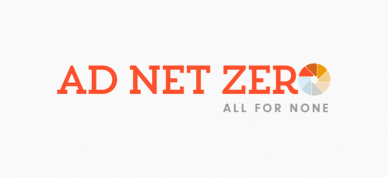The Global Media Sustainability Framework is a cross-industry collaboration between WFA’s Global Alliance for Responsible Media (GARM) and the Ad Net Zero community. It allows advertisers, media owners and agencies to measure across six major media types.
Ad Net Zero (ANZ) has published the first iteration of its Global Media Sustainability Framework - a series of voluntary industry standards to improve consistent, comparable measurement of greenhouse gas emissions from digital, television, print, audio, outdoor, and cinema channels. The new framework has been supported by a collection of the world’s largest advertisers, as well as the world’s 6 largest advertising holding companies, major media owners, tech companies and trade bodies, many of whom have contributed to its development (listed below).
The framework is the outcome of a 12-month, GARM-led global engagement effort to build a series of common measurement processes and includes the first versions of formulae, as well as tools to help efficiently collect emissions data from companies throughout the media supply chain. Up until now, there has been no consistent, agreed industry-wide measurement framework.
The goal is to help every advertiser and their partners understand and take positive action to reduce the carbon impact of their media plans – in line with Action 3 of the Ad Net Zero Action Plan.

The work has been supervised and assessed for consistency with best carbon accounting practices by a Climate Science Expert Group including representatives from PwC, Brain Oxygen, Climate Impact Partners, BL Evolution and top climate experts from Unilever, Reckitt, and Diageo. A key foundation for the development of the formulae used in the framework has been provided by the Oneframe Initiative in France, with specific components provided by SRI, Alliance Digitale and SNPTV.
What is being released today
The first versions of formulae being released are for TV, digital and OOH (representing 81% of global 2023 ad spend according to Magna), with the formulae for the remaining three media types; radio, print and cinema, to follow. It is expected that the formulae will continue to be refined. In addition to the formulae for six media channels, the new framework provides the industry with:
1. A common enterprise level data request form for more efficient data collection of company data from media sellers, with more specific channel level data being required in the framework over time.
2. A disclosure form for the industry to understand the scope, data rigour and scientific validation of media sustainability solutions providers.
3. A voluntary monitoring template to help GARM and ANZ learn about the adoption and effectiveness of the frameworks.
What next?
The next phase of work for GARM and Ad Net Zero will be to establish an efficient system to transfer emissions data between buyers and sellers, followed by validation of media GHG data using agreed industry standards. Uptake and adoption will be tracked, with the first results published in Q2 of 2025.
How each part of the global advertising industry can play a key role in driving this framework forward.
1. Advertisers are asked to check that the partners who measure GHG emissions from their media activities are using the Global Media Sustainability Framework.
2. Agencies can ensure their own tools or partners are using the Global Media Sustainability Framework and make GHG emissions a consideration for all media plans.
3. Media owners can supply the requested data to advertisers, agencies and other solutions providers in as much granularity as possible, continually improving the quality of this data over time.
How the framework was created
Six cross-industry working groups have produced this comprehensive set of voluntary standards to help reduce varying approaches to measurement, data and reporting. This approach has ensured widespread support and action across the industry, with 70% of responding organizations saying they plan to implement the standards in ways that are relevant to their media operations.
Sebastian Munden, Chair, Ad Net Zero, said: “Today’s release of standard calculations for the carbon footprint of major media channels is a significant milestone for Ad Net Zero and the global ad industry. They are the starting point for creating a common currency for global voluntary adoption: a base for calculating reduction and accelerating progress. Concerted efforts to reduce the carbon footprint of media should go hand in hand with the efforts to support more sustainable choices to change the way we work and change the work we make. The ad industry has the business opportunity of a generation to be part of the solution.”
Rob Rakowitz, Initiative Lead, Global Alliance for Responsible Media, said: “We are proud to support Ad Net Zero and help the group to create an essential foundation for the industry to benchmark their activities. We are hopeful that this work stemming from our uncommon collaboration will allow industry stakeholders to pursue a larger transformation in voluntarily reducing emissions stemming from media campaigns.”
Phil Smith, Director General, ISBA, said: "We're delighted to see the fruits of this massive collaboration and support the framework. Advertisers have been clear about the need for rigour and consistency in the measurement that will help them reduce their emissions from media. This is a major step forward."